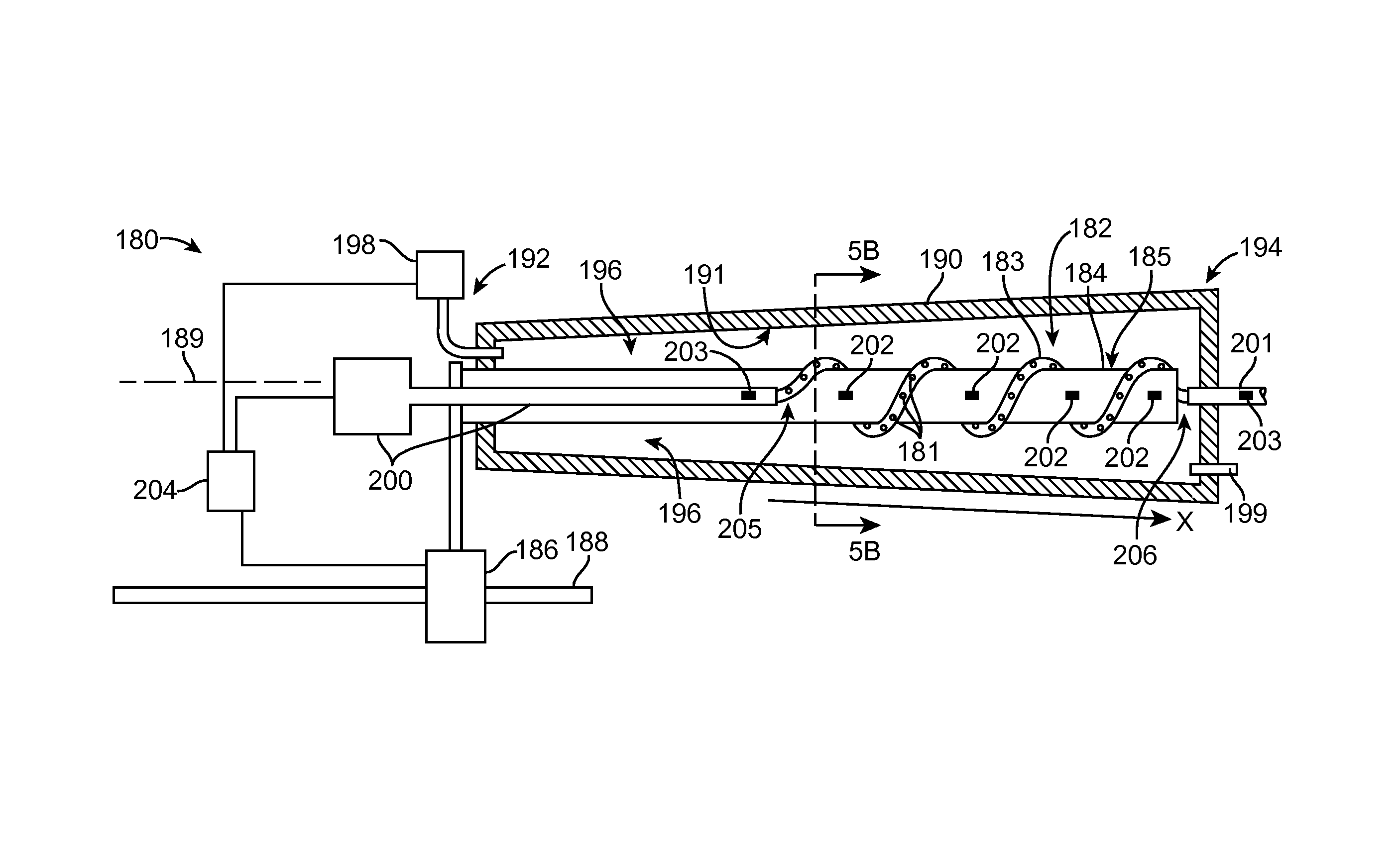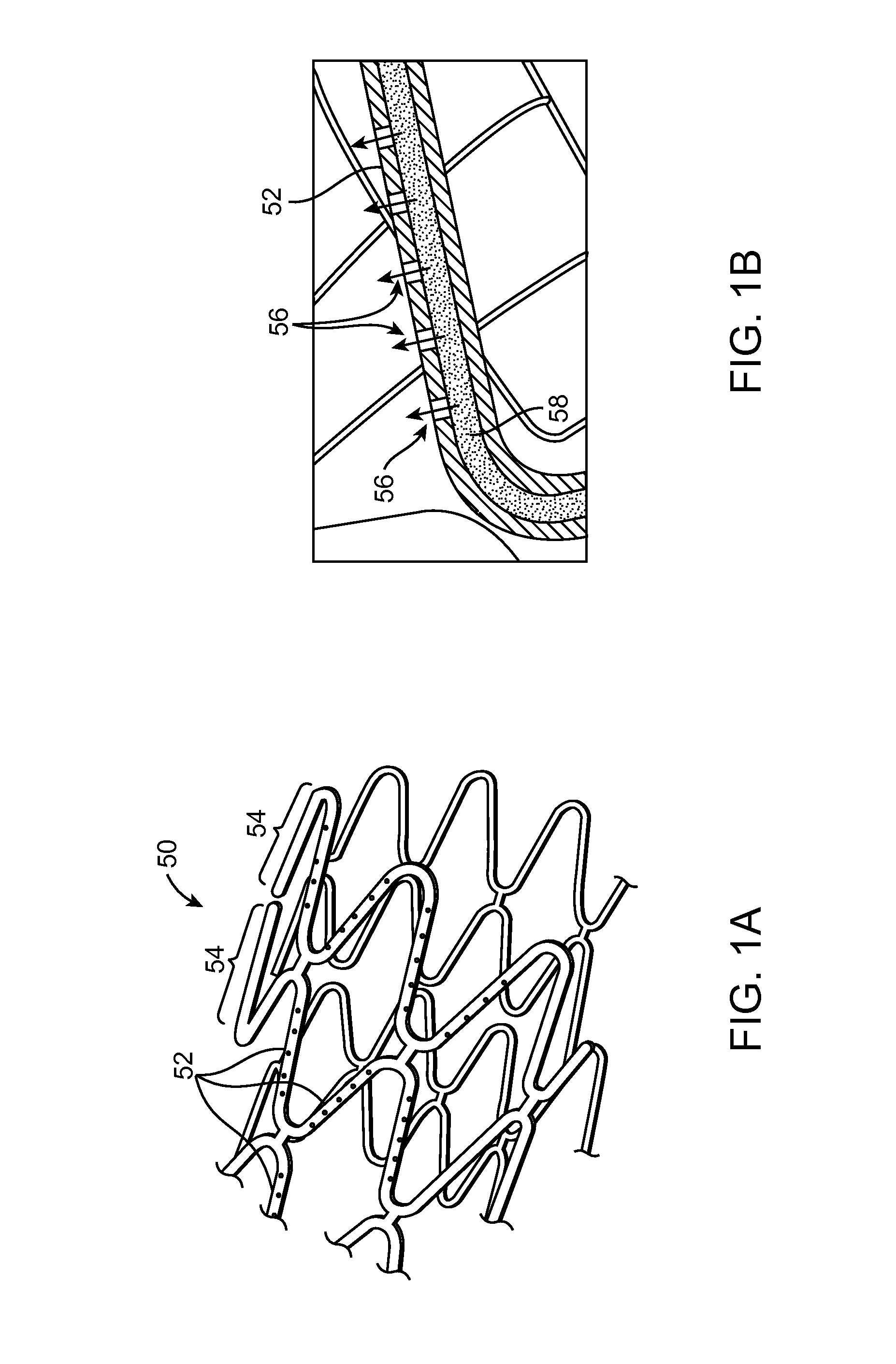Methods of drug loading a hollow stent with a high viscosity formulation
a technology of high viscosity and hollow stent, which is applied in the direction of packaging foodstuffs, blood vessels, packaged goods, etc., can solve the problems of prolonging the recovery period, and affecting the effect of recovery
- Summary
- Abstract
- Description
- Claims
- Application Information
AI Technical Summary
Benefits of technology
Problems solved by technology
Method used
Image
Examples
example 1
Prospective Example
[0229]An 18 mm in length stent with hollow struts is fabricated from a biocompatible metal such as stainless steel. PEG 1000 having a number-average molecular weight of about 1000 Daltons is melted at a temperature at or above 45° C. Zotarolimus is dissolved into the PEG 1000 forming a composition of 90% by weight PEG 1000 and 10% by weight zotarolimus. The stent is pre-heated to a temperature of about 45° C., and maintained at 45° C. or slightly higher while the composition, which is also maintained at 45° C. or a higher temperature, is injected into the lumen of the struts. A sufficient volume to provide 180 ug of zotarolimus is injected. If the volume of the strut lumens is not sufficient to obtain 180 ug of zotarolimus at a weight ratio of PEG 1000 to zotarolimus of 9:1, the weight ratio may be adjusted slightly such that the stent contains 180 ug of zotarolimus.
example 2
Prospective Example
[0230]Dexamethasone acetate, with a melting temperature of 240° C., is melted to form a composition which is injected into the lumen of a 12 mm stent having hollow struts. The injector is coupled to an inlet opening of the tube forming the stent until the composition is visible at the other end of the tube. The filled stent is cooled to about 20° C. to 25° C. The dexamethasone acetate solidifies.
example 3
Prospective Example
[0231]The stent from example 2, after being loaded with dexamethasone acetate, is coated by spray coating. The coating is obtained by spraying a 1:1 weight ratio blend of zotarolimus and poly(glycolide-co-D,L-lactide), of a 75:25 molar ratio of the constituent monomers glycolide:D,L lactide, in acetone onto the outer surface of the stent such that 120 ug of zotarolimus is contained in the resulting coating on the stent. When the stent is implanted, the zotarolimus is first released to control smooth muscle cell proliferation. After about 1 to 3 months, the stent begins to release dexamethasone acetate which is released over an extended period of time providing an anti-inflammatory effect.
PUM
| Property | Measurement | Unit |
|---|---|---|
| viscosity | aaaaa | aaaaa |
| pressure | aaaaa | aaaaa |
| temperature | aaaaa | aaaaa |
Abstract
Description
Claims
Application Information
 Login to view more
Login to view more - R&D Engineer
- R&D Manager
- IP Professional
- Industry Leading Data Capabilities
- Powerful AI technology
- Patent DNA Extraction
Browse by: Latest US Patents, China's latest patents, Technical Efficacy Thesaurus, Application Domain, Technology Topic.
© 2024 PatSnap. All rights reserved.Legal|Privacy policy|Modern Slavery Act Transparency Statement|Sitemap



